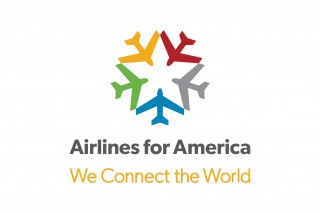News & Events
ALERT Program
Airlines for America (A4A) Visit ALERT July 28, 2017

On July 19, 2017, ALERT hosted Airlines for America (A4A), a trade association based in Washington, D.C. A4A member airlines and their affiliates transport more than 90% of U.S. passenger and cargo traffic. A4A’s stated purpose is to “foster a business and regulatory environment that ensures safe and secure air transportation and enables U.S. airlines to flourish, stimulating economic growth.” As such, A4A’s support is critical to ALERT’s mission and developing closer ties is of strategic importance to our researchers and our industrial partners.
A4A representatives started the day by being presented with an overview of ALERT’s organization, research, and partnerships with industry by ALERT’s Deputy Director, Prof. Carey Rappaport. This presentation was given at Northeastern University’s Kostas Institute for Homeland Security (KRI) in Burlington, MA and was followed by a tour of ALERT’s Video Analytics Laboratory, which is housed at KRI and is currently being used for ALERT’s Correlating Luggage and Specific Passengers (CLASP) research project.
The group then returned to Northeastern’s main campus in Boston, MA and toured the Advanced Imaging Technology (AIT) Laboratory led by Professor Carey Rappaport and the Sensing, Imaging, Control and Actuation (SICA) laboratory lead by Professor Jose Martinez-Lorenzo. Both labs provided demos of ALERT’s On-the-Move technologies and Whole Body Scanning technologies; the latter demo was assisted by ALERT’s current Research Experiences for Undergraduates (REU) students. The A4A team was very impressed with the research presented and requested a second day-long event to allow representatives from A4A member organizations to see firsthand the results of ALERT’s research efforts.
In building partnerships with A4A and the airlines and affiliates they represent, ALERT hopes to deliver relevant and field-able technologies to the air transportation community.
Five Questions with Srikrishna Karanam (RPI, MS ’14, PhD ’17) July 28, 2017
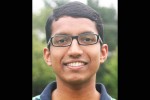
Former ALERT student researcher, Srikrishna Karanam, reflects on his time with ALERT and how it prepared him for working in the Homeland Security Enterprise.
Srikrishna joined ALERT in 2013 as a graduate student working with Prof. Richard J. Radke at Rensselaer Polytechnic Institute (RPI) on video analytics problems in camera networks. At RPI, he earned his MS in Electrical Engineering and his Ph.D. in Computer and Systems Engineering. Srikrishna is now working as a Research Scientist at Siemens Corporate Research, focusing on computer vision and machine learning.
What professional development opportunities, aside from research experience, benefitted you during your time as an ALERT student?
SK: During my time as an ALERT student, I attended several major conferences in Computer Vision – CVPR 2015 in Boston, MA, BMVC 2015 in Swansea, UK and ICCV 2015 in Santiago, Chile. Going to these conferences allowed me to discuss open problems and establish connections with several researchers in my field. Furthermore, I participated in several ALERT events – ASPIRE, ADSA, and ALERT annual meetings – where I got opportunities to present my work to several stakeholders in the security and surveillance industry.
These ALERT events were crucial in that they helped me focus my algorithmic and systems research on operational aspects from an end-user’s perspective – I believe these are critical issues as we transition laboratory research into working prototypes in the real world.
We understand that you were working under the supervision of former ALERT student, Ziyan Wu (RPI, PhD ‘14) during an internship with Siemens Corporate Research (Princeton, NJ) last year. What were some highlights from that experience?
SK: I was given a lot of independence in addressing existing problems the group at Siemens was tackling. This gave me an opportunity to explore several algorithmic as well as implementation and engineering components of the project I was assigned to. At the algorithmic level, I developed new algorithms and demonstrated improved performance on internal datasets. In addition, I assisted the group in integrating these algorithms as part of a large system that has been deployed for in-the-field testing.
This assignment provided me with valuable, real-world, hands-on research experience. Ziyan and others in the Vision Technologies and Solutions group were very supportive, kind, and welcoming, and I thoroughly enjoyed working there and developed great friendships along the way.
During your time at ALERT, you collaborated with ALERT teams from RPI, Northeastern University, and Boston University. Can you tell us a little bit about these collaborations and how they have prepared you to work in industry? Have you continued these collaborations post-graduation?
SK: I worked with the ALERT teams from RPI, Northeastern University, and Boston University on the VAST “Tag and Track” project (see related video at: https://alert.northeastern.edu/news-article/alert-101-is-back/) for over 3 years. Each team was responsible for specific parts of the project, with the goal of deploying and testing a working prototype of the system at the Cleveland International Airport, which was successfully achieved in Summer 2015.
The “Tag and Track” project provided me with real-world research, development, and project management experience, helping develop skills that are particularly relevant to industrial research labs. At Siemens Corporate Technology, I have been working on solving vision problems with practical relevance across multiple industrial units, and my experience with ALERT has helped me transition into my current work environment seamlessly.
Because of this project, I developed close collaborations (and friendships) with several researchers from Northeastern (specifically, Mengran Gou (NU, PhD ’17) and Oliver Lehmann (NU, PhD ’15)) in addition to Ziyan Wu and Austin Li (RPI, PhD ’15) from RPI. For instance, since the winter of 2015, Mengran and I have been closely collaborating on a project where our goal is to benchmark the current state-of-the-art in person re-identification for the convenience of the larger research community – as part of this work, we have evaluated several hundreds of different algorithms on numerous public datasets. Ziyan and I have been closely working together on numerous problems for many years – initially at RPI and now at Siemens.
Can you describe your role at Siemens and the research you are conducting now?
SK: I work as a Research Scientist in the Vision Technologies and Solutions group at Siemens Corporate Technology, where I research topics in Computer Vision and Machine Learning. I am responsible for developing algorithms to address research problems, as well as prototype systems that leverage these algorithms to solve real-world problems. My current research focuses on all aspects of image indexing, search, and retrieval with applications in object recognition and pose estimation.
Where do you see yourself in 5 years?
SK: My past research experience at RPI and ALERT has made me realize the importance of, and challenges in, getting lab-optimized research to work effectively in the “wild” real-world. To this end, I hope to contribute towards bridging this “gap,” enabling and building systems that offer Computer Vision, Machine Learning, and Data Analytics technologies as services to solve a wide variety of real-world problems.
Summer REUs at Northeastern University and University of Puerto Rico Mayagüez July 28, 2017
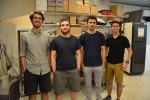
July 28, 2017
This summer, ALERT is hosting three undergraduate students to participate in the 10-week Research Experience for Undergraduates (REU) program at Northeastern University. Nikhil Phatak (Computer Engineering & Computer Science ’20), Daniel Castle (Electrical Engineering ’21), and Jacob Londa (Computer Engineering ’21) are working with Prof. Carey Rappaport and graduate student mentor, Mohammad Nemati on the Advanced Imaging Technology (AIT) project. ALERT is also hosting two REU students at the University of Puerto Rico Mayagüez.
At the end of the summer, students will give a short video presentation on their research project, which will be featured on ALERT’s website. The video presentations will consist of a brief overview of each student’s research project, the project’s overall mission and activities, their specific contributions to the project, and knowledge and skills gained.
The program is hosted and sponsored by the Awareness and Localization of Explosives-Related Threats (ALERT) Department of Homeland Security Center of Excellence, and the Bernard M. Gordon Center for Subsurface Sensing and Imaging Systems (Gordon-CenSSIS), a Graduated National Science Foundation Engineering Research Center.
ADSA16 Presentations Now Available June 20, 2017
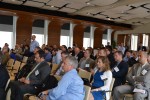
We are pleased to announce that the presentations from The Sixteenth Advanced Development for Security Applications Workshop (ADSA16) which was held on May 2-3, 2017 at Northeastern University in Boston, MA are now available for download.
The title of the workshop was, “Addressing the Requirement for Different Stakeholders in Transportation Security.” View all slides, as well as the reports from past ADSA workshops here.
If you have any questions regarding the topics and technologies discussed at the workshop, please contact ALERT at [email protected].
ALERT Launches Video Analytics Lab at Kostas Research Institute May 30, 2017
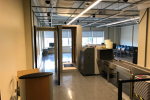
A Better Testing Facility for Solving Real World Problems
Northeastern University’s George J. Kostas Research Institute for Homeland Security is now home to ALERT’s new Video Analytics Laboratory. Providing secure access, 1225 sq. feet of open space, controlled lighting conditions, and a fully networked and flexible camera grid, ALERT can better investigate and develop video and sensor technologies to address the needs of the Homeland Security Enterprise.
Using Video Technologies to Improve Passenger Experience
The first research project to leverage the lab is entitled Research and Development of Systems for Tracking Passengers and Divested Items at the Checkpoint. Supported by the DHS Science and Technology Directorate through the DHS Office of University Programs, this project is known by the acronym CLASP (Correlating Luggage and Specific Passengers) and leverages the technical expertise of ALERT research teams from Boston University, Marquette University, Northeastern University, Purdue University, and Rensselaer Polytechnic Institute. These teams will work towards developing an automated system capable of tracking passengers and divested items at airport security checkpoints.
CLASP will primarily focus on using video technologies to assist the Transportation Security Administration (TSA) in effectively identifying security incidents like theft of items, or bags left behind at the checkpoint. By automating and improving the technologies associated with these objectives, ALERT hopes to improve rates of detection and at the same time improve the passenger experience.
CLASP was the result of DHS’s interest in initial work done by ALERT Project Investigator Richard Radke’s lab. A video of their work can be seen below:
(Z. Wu and R.J. Radke, Real-Time Airport Security Checkpoint Surveillance Using a Camera Network. Workshop on Camera Networks and Wide Area Scene Analysis, in conjunction with CVPR 2011, June 2011.).
Government & Industry Partners Make the Difference
In order to deliver the system outlined in CLASP, the researchers working on the project require access to video data displaying real-world checkpoint security situations. Actual airport security video is generally restricted, so ALERT partnered with Massport, the Transportation Security Administration at Boston Logan International Airport, and industrial partners such as Rapiscan Systems to create an accurate representation of an airport security checkpoint in the ALERT Video Analytics Laboratory. This full-scale, mock airport security checkpoint uses the same hardware and design specifications currently used by the TSA at airports such as Logan, and gives ALERT a space to generate usable video data for this project and hopefully to the video analytics research community as a whole.
CLASP is just the beginning of work that can be done in this new laboratory and ALERT is hoping to leverage it for additional homeland security-related projects going forward. If you are interested in partnering with ALERT on future projects, please connect with us via email at [email protected].
Industry Spotlight: Q&A with Dr. Mark Witinski of Pendar Technologies May 30, 2017

ALERT recently caught up with Dr. Mark Witinski, Vice President of Chemical Analysis & Security Group, at Pendar Technologies. Dr. Witinski served as co-founder and President of Eos Photonics prior to the merger which formed Pendar Technologies. At Pendar Technologies, he focuses primarily on applications development, business to business strategic partnerships, and government sales.
1) Can you describe the work Pendar Technologies does and how it contributes to the Homeland Security Enterprise?
Pendar’s work in furthering the Homeland Security Enterprise takes a few forms. The most critical one – the one that is the focus of our first product – is giving security and military personnel the tools to analyze unknown chemicals in the field and without physical contact. This is generally referred to as “Standoff Detection.”
2) Pendar Technologies is one of ALERT’s industrial members. How has collaboration with ALERT been beneficial to Pendar Technologies?
For Pendar, there are two major benefits to our longstanding ALERT membership. One is direct interaction with thought leaders in the Homeland Security space, where we learn first-hand about the contemporary challenges and frontiers in various security settings. The other major benefit has been formal and informal collaborations with other members of the ALERT community that serve to address those challenges. For instance, Pendar has pursued new sensing modalities with other industrial members and has also fostered collaborations with academic research groups from ALERT affiliated universities including: Northeastern University, Purdue University, Tufts University, The University of Rhode Island, and The University of Puerto Rico.
3) Can you describe some of the technology that has been developed or improved upon through the Pendar Technologies/ALERT partnership?
Sure. Pendar uses a unique laser technology called the Quantum Cascade Laser. Critical advancements in that technology were made through two years of partnership with ALERT and The John Adams Institute for Innovation (JAII). This work was especially important as it came during a very formative time in our company. Working with ALERT and JAII helped to reduce the market risk pursuing the technological path that we were on.
4) You completed your doctorate in Chemical Physics at Cornell University where your research focused on molecular beams and laser spectroscopy to examine the dynamics of molecular collisions. What inspired you to pursue this research area?
This is an interesting question—one I even ask myself sometimes. My graduate work, and my postdoc work for that matter, were both focused on gas phase chemistry. Specifically, I sought to examine the detailed aspects of individual molecular reactions to gain the understanding that underpins how, for instance, ground level pollutants form and how they are removed. The atmosphere is a reactor—a very large and hard to control reactor. As a health matter, dangers lie not only in exposure to chemicals that are directly emitted. Rather, substances and their levels are governed by a complex set of coupled reactions, reactions which I wanted to understand as fully as possible before even attempting to comment on a solution. In this process, I became exposed to many laser technologies, including the Quantum Cascade Laser.
5) Can you describe your current role at Pendar Technologies and how your technical background prepared you for this role?
What I try to do is to listen to leaders from the agencies that all of us rely on to enhance our security. Often, these conversations reveal that many agencies, as well as the Defense Departments of the world share similar needs, although they may not communicate directly with one another. If a security capability is both desired and is lacking in multiple user groups, it tells me that a new capability is truly needed for protection of the public and of military forces. I then work with other Pendar scientists and engineers to see if we can offer a solution.
6) What emerging technology or research in the chemical analysis and security domains are you most excited about?
One of the things about chemical analysis that is not immediately obvious is that, at the most fundamental of levels, we basically have the tools that we are going to have for the foreseeable future: Mass Spectrometry, Infrared Spectroscopy, Chromatography, Raman Spectroscopy, X-Ray Imaging, Ion Mobility Spectrometry, and the list goes on.
What advances the capabilities of these methods is how they are practiced and integrated in a way that leverages advances in other disciplines. For instance, modern systems are engaging high speed portable computing, ever improving camera systems, additive manufacturing technology, wireless communications, etc… It is through careful integration and mastery of the entire chemical/instrument/user system that disruptive advances occur. It seems clear that the necessity of end-to-end mastery in this space is causing security developers to collaborate more, and venues like ALERT are key in fostering needed collaborations.
Kurt Jaisle Selected as Finalist in IEEE AP-S Student Paper Competition May 30, 2017
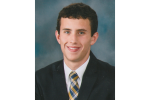
May 30, 2017
ALERT student researcher and Northeastern University Scholar, Kurt Jaisle has been selected as a finalist in the 2017 IEEE Antennas and Propagation Symposium’s (AP-S) Student Paper Competition for his paper, “Ray-Based Reconstruction Algorithm for Multi-Monostatic Radar in Imaging Systems.”
Being selected as a finalist is quite an accomplishment, as each paper submitted to the IEEE AP-S Student Paper Competition undergoes three independent reviews from experts in each student’s field of study. Jaisle’s submission was selected out of 159 papers, most of which were submitted by doctoral students. Kurt is a third year undergraduate student majoring in Electrical and Computer Engineering and conducts ALERT research with Professor Carey Rappaport on the R3 Research Thrust (Bulk Sensors & Sensor Systems).
Jaisle believes that the topic of his paper is relevant to aviation security and the Homeland Security Enterprise: “Today’s airport security scanners use very computationally demanding algorithms to process sensor data into an image of a passenger. As a result, these scanners require expensive, high-performance computers to complete the algorithms in a reasonable amount of time. Yet even with these powerful machines, it can still take several seconds for a scan to be processed.” In his paper, Jaisle proposes a new algorithm that would result in significantly faster processing times resulting in shorter lines for passengers at airport security checkpoints, and a reduction in the cost of the computer hardware used in scanners, potentially making the technology more accessible for broader security applications.
Under the guidance of Professor Rappaport, Jaisle began coding the algorithm in Fall 2015. Over the course of a year, he managed to bring the algorithm from a rudimentary 2D simulation to a functional 3D simulation worthy of publication. Reflecting on his experience conducting research with Professor Rappaport, Jaisle states, “Aside from a great deal of technical knowledge, I think the most important thing I have learned from Professor Rappaport is to not leave an endeavor half-finished. Even when I was stuck on a technical challenge for weeks at a time, he would remind me that progress in research is non-linear and that it was worth seeing it through so that I could eventually share my work with the broader community.”
Jaisle’s interest in engineering was sparked during middle school, when he became involved in FIRST Robotics, a program that aims to develop young STEM leaders through robotics competitions. As time passed, he became interested in the electrical side of engineering and decided to pursue this field of study at Northeastern University. After graduation, Jaisle plans to pursue a Master’s Degree in the context of analog electronics, and is hoping that his upper level Electrical Engineering courses, co-op opportunities, and research experiences will help him choose a specific topic of study.
Jaisle will present on his selected paper at the IEEE AP-S Symposium in San Diego, California in July. Following the presentations, the Student Paper Competition Committee Chair will announce the first, second, and third place winners at the IEEE A-PS Symposium’s Annual Awards Ceremony.
ADSA16: Bringing Transportation Security Stakeholders Together May 30, 2017

The Sixteenth Advanced Development for Security Applications (ADSA16) Workshop was held on May 2-3, 2017 at Northeastern University in Boston with 160 participants in attendance. The theme for the workshop was “Addressing the Requirements for Different Stakeholders in Transportation Security,” which explored the stakeholder perspectives of the Transportation Security Administration (TSA), airlines, vendors, passengers, academia, and national labs.
Some of the topics discussed at ADSA16 were methods and technologies to optimize airport security checkpoints; emerging technologies; explosives trace detection; deep learning; and techniques and strategies for securing soft targets (malls, arenas, outdoor events).
ADSA16 was unique from previous workshops, because it included the involvement of airline representatives from Alaska Airlines and Jet Blue, who discussed the importance of forming partnerships with aviation security stakeholders during an insightful panel discussion.
The ADSA Workshop series has been convened by the DHS Center of Excellence (COE) for Awareness and Localization of Explosives-Related Threats (ALERT) since 2009. Originally named the “Algorithm Development for Security Applications” Workshop series, the name was changed following ADSA10 in 2014 to reflect how the scope of the workshop series has expanded well beyond algorithms. The ADSA Workshop series is intended to address research opportunities that may enable the development of next-generation systems and to facilitate collaboration and innovation between researchers from academia, national labs, and industry.
The next ADSA Workshop (ADSA17) will be held at the same location on October 17-18, 2017 with the theme “Systems Engineering of Aviation Security Systems.” Specific topics that will be addressed include requirement specifications for systems and subsystems; the acquisition and use of metadata; assessment, management, and use of risk; and layered security. ADSA17 is expected to continue to draw interested and engaged communities from the Homeland Security Enterprise.
For more information about the upcoming ADSA17, please visit the ADSA17 information page. To read up on previous ADSA Workshops, check out ALERT’s collection of final reports.
ALERT & Gordon-CenSSIS Scholars Delivered Final Presentations May 30, 2017

May, 2017
This year, ALERT and Gordon-CenSSIS had the honor of hosting 15 freshmen engineering students as participants in the ALERT and Gordon-CenSSIS Scholars Program.
After two semesters of active involvement in the program — which includes participation in an ALERT or Gordon-CenSSIS research project, K-12 STEM outreach, and Scholar meetings, seminars and activities — they completed the program on Wednesday, April 12, 2017, when they presented their final research presentations to their faculty advisors and other members of the Scholars community. The final presentations consisted of a 2-minute “elevator speech” from each student, which provided an overview of their research project’s overall mission and activities, their specific contributions to the project, as well as a description of the knowledge and skills they gained.
The ALERT and Gordon-CenSSIS Scholars Program is designed to provide freshmen engineers with the opportunity to get involved in research and STEM outreach, but also focuses on building their professional development. Throughout the year, Scholars attended seminars on Public Speaking Skills, Research Ethics, Lab Safety and Research Poster Building Skills.
ASPIRE 2017: Bringing Students, Faculty, Industry, and Government Together March 31, 2017
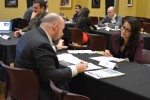
The Annual Student Pipeline Industry Roundtable Event (ASPIRE) was held on Thursday, March 16, 2017 at Northeastern University, Boston. Each year, ASPIRE, which is hosted by ALERT (Awareness and Localization of Explosives-Related Threats) and Gordon-CenSSIS (The Bernard M. Gordon Center for Subsurface Sensing and Imaging Systems), brings together members of the academic, industrial, and government communities to engage in dialogue, and provides networking opportunities for ALERT and Gordon-CenSSIS students looking for internships, co-op opportunities, and employment.
Participants at ASPIRE 2017 included industry representatives from American Science and Engineering/Rapiscan Systems, Analog Devices, Hamamatsu Photonics, HXI, and Morpho Detection; government representatives from the Department of Homeland Security, U.S. Coast Guard, U.S. Customs and Border Protection, and the Transportation Security Laboratory (TSL); and ALERT-affiliated graduate students from Boston University, Duke University, Northeastern University, Purdue University, Texas Tech University, and University of Puerto Rico Mayagüez.
The event started off in the early afternoon with welcoming remarks from Dr. Carey Rappaport (ALERT Deputy Director, ALERT Research Thrust Leader for R3 Bulk Sensors and Sensor Systems, and Electrical and Computer Engineering professor at Northeastern University), followed by industry and government introductions delivered by Emel Bulat (ALERT Senior Consultant for Corporate and Government Partnerships). Afterward, industry and government members gave 8-minute presentations on their organizations, research needs, and job openings. In the late afternoon, Dr. Hanumant Singh (Electrical and Computer Engineering, and Mechanical and Industrial Engineering professor at Northeastern University) delivered the keynote talk: “Autonomous Surface Vessels: High Resolution Mapping for Change Detection Spatially and Temporally.” This was followed by two separate roundtable networking sessions, in which representatives from industry and government met one-on-one with students, as well as with each other.
On the morning of the event, ALERT was pleased to welcome Brian Dolph of the U.S. Coast Guard and Chris Mocella of U.S. Customs and Border Protection to the laboratories of ALERT researchers, Dr. Octavia Camps, Dr. Jose-Martinez-Lorenzo, Dr. Carey Rappaport, and Dr. Matteo Rinaldi in order to showcase their research and its relevance to the Homeland Security Enterprise.

